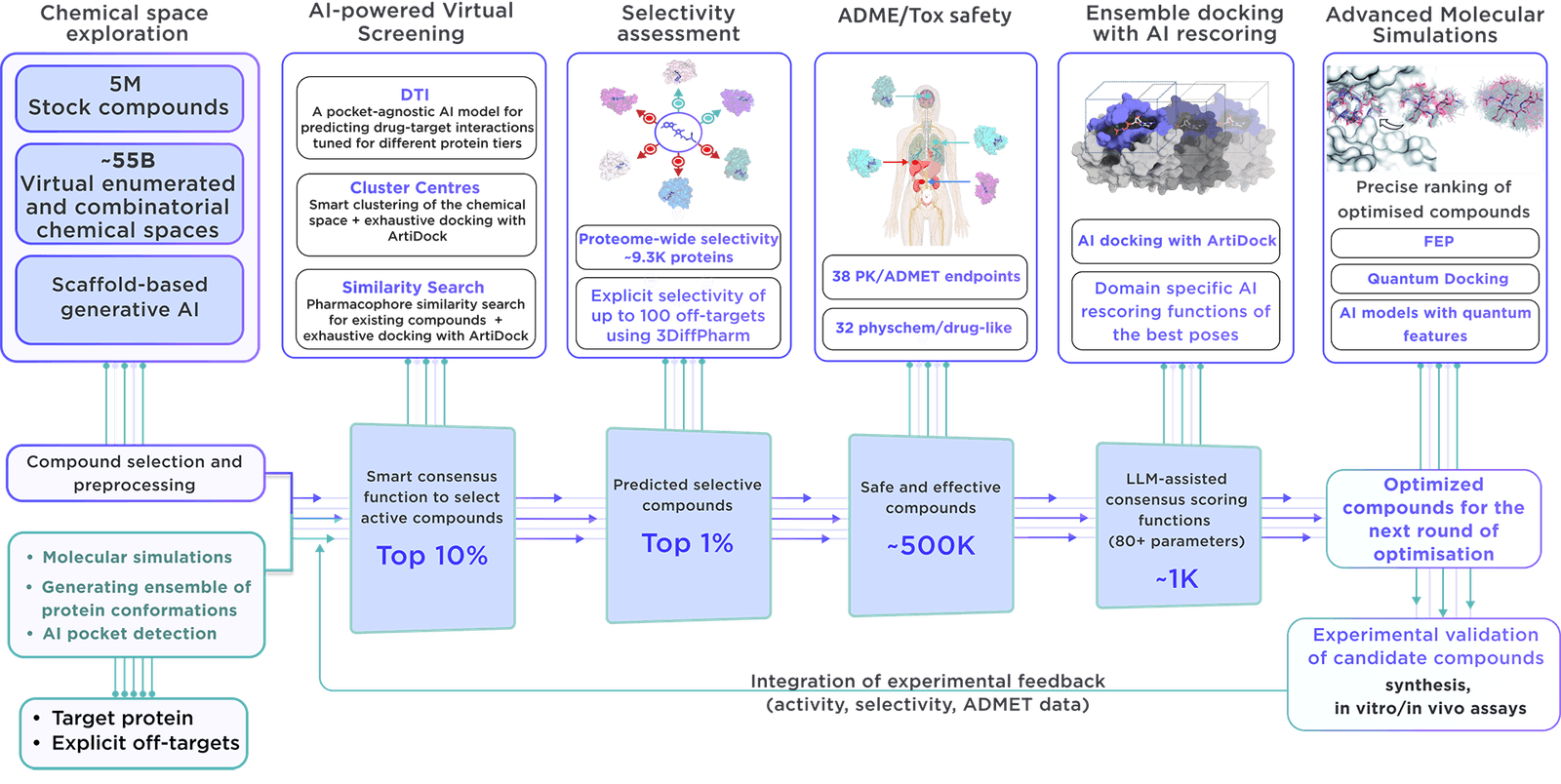Focused On-demand Libraries - Receptor.AI Collaboration
Explore the Potential with AI-Driven Innovation
The focused library is created on demand with the latest virtual screening and parameter assessment technology, supported by the Receptor.AI drug discovery platform. This method is more effective than traditional methods and results in higher-quality compounds with better activity, selectivity, and safety.
We pick out particular compounds from an extensive virtual database of more than 60 billion molecules. The preparation and shipment of these compounds are facilitated by Reaxense.
In the library, a selection of top modulators is provided, each marked with 38 ADME-Tox and 32 parameters related to physicochemical properties and drug-likeness. Also, every compound comes with its best docking poses, affinity scores, and activity scores, providing a comprehensive overview.
We utilise our cutting-edge, exclusive workflow to develop focused libraries for enzymes.
The procedure entails thorough molecular simulations of the catalytic and allosteric binding pockets, accompanied by ensemble virtual screening that factors in their conformational flexibility. When developing modulators, the structural modifications brought about by reaction intermediates are factored in to optimize activity and selectivity.
Key features that set our library apart include:
- The Receptor.AI platform integrates extensive information about the target protein, such as historical experiments, academic research, known ligands, and structural insights, thereby increasing the likelihood of identifying highly relevant compounds.
- The platform’s sophisticated molecular simulations are designed to discover potential binding sites, ensuring that our focused library is optimal for the discovery of allosteric inhibitors and binders for cryptic pockets.
- With over 50 customisable AI models, verified through extensive testing in commercial drug discovery and research, Receptor.AI is efficient, reliable, and precise. These models are essential in the production of our focused libraries.
- Receptor.AI not only produces focused libraries but also provides full services and solutions at every stage of preclinical drug discovery, with a success-based pricing structure that aligns our interests with the success of your project.
Receptor.AI
Q9BUM1
UPID:
G6PC3_HUMAN
ALTERNATIVE NAMES:
Glucose-6-phosphatase beta; Ubiquitous glucose-6-phosphatase catalytic subunit-related protein
ALTERNATIVE UPACC:
Q9BUM1; Q8WU15

